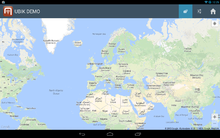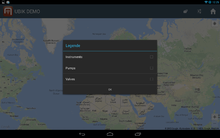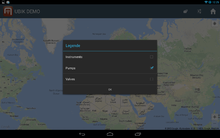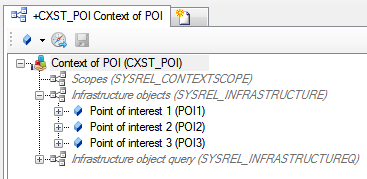Difference between revisions of "HowTo:Declare an Object as Map Layer"
| Line 1: | Line 1: | ||
| − | To make objects appear as [[Map Layers]] on the map they must be configured as follows: | + | To make objects appear as [[Map Layers]] on the map they must be configured as follows:<br/>[[File:UI_MapLayer_01.png|220px|border|alt=Map Layer]][[File:UI_MapLayer_02.png|220px|border|alt=Map Layer]][[File:UI_MapLayer_03.png|220px|border|alt=Map Layer]] |
#Set the [[SYSCLS_MAPLAYER]] classification on the [[MetaClass]] of the object using the ''[[Class Details#Classification|Class Details]]'' control<br/>[[File:UI_HowTo_CreateANewMapLayer_01.png|220px|border|alt=Classify as Map Layer]] | #Set the [[SYSCLS_MAPLAYER]] classification on the [[MetaClass]] of the object using the ''[[Class Details#Classification|Class Details]]'' control<br/>[[File:UI_HowTo_CreateANewMapLayer_01.png|220px|border|alt=Classify as Map Layer]] | ||
Revision as of 11:36, 3 December 2013
To make objects appear as Map Layers on the map they must be configured as follows:


- Set the SYSCLS MAPLAYER classification on the MetaClass of the object using the Class Details control

- The object needs to be added to the list of infrastructure object of the according Application, there are two different ways to achieve that:
- Individual objects can be added directly to the Infrastructure relation in the ACM using the Relation Editor.
- To add multiple objects of the same type, a query has to be created and added to the Infrastructure query relation in the ACM.
- Individual objects can be added directly to the Infrastructure relation in the ACM using the Relation Editor.


